Visit our new blog
This blog has been temporarily discontinued due to access problems with Blogia!
Please, visit our new blog at: http://lallena.blogspot.com/
This blog has been temporarily discontinued due to access problems with Blogia!
Please, visit our new blog at: http://lallena.blogspot.com/
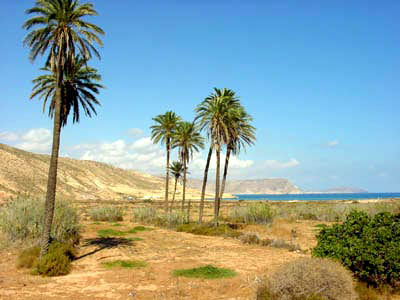
Rodalquilar is a little village in Almeria. It is located in the Cabo de Gata National Park, which was the first sea-terrestrial one in Andalucia.
Rodalquilar was a mining region but in 1966 the gold mines and the village were abandoned. The hamlet became populated by the squaters but the government threw them out of there. Now there are about 100 inhabitants in winter but in summer the population grows to 300 because of tourism.
The village is very close to the sea, there are about 5 km between the village and the nearest beach called "El playazo". In that heavenly beach you can find an ancient castle, built in the 18th century by Carlos III.
In the hamlet there's also a diving club where you can learn how to dive, they do immersions every day and at night the club becomes a pub. In Rodalquilar there's a famous pizzeria in the region called pan p'pato, there's also a new local which is a mixture between an art gallery and a pub, but the bars are plentifull in this village, there are about six or seven different bars. You can also find some locals to stay. There are some houses for rent, there is also a new hotel and an inn. "El Albardinar" is a botanical garden located in the surrounding area, there you can find the most representative species.
In conclusion, I recommend everybody to visit Rodalquilar because it's a nice place to spend your holidays.
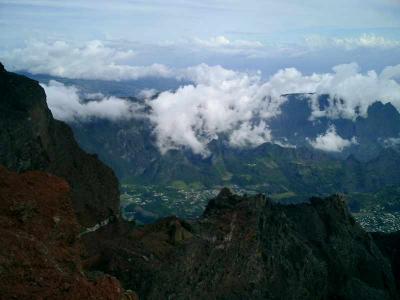
La Réunion is a volcanic island of the Indian Ocean. It is next to Madagascar, in the south of Africa.
It´s a region membershiped to France, the country that began to introduce settlers and slaves from Africa, India and Indochina in 1642.
It has an area of 2,520 Km2, and it has two volcanos: the “Piton des Neiges” has been dormant for a long time, and the “Piton de la Fournaise” has had its last eruption on 2004.
Because of trades winds, one half of the island has waterfalls and green ladscapes; and the other half is drier and there are more beaches for tourists.
The temperature doesn´t go down more than 19ºC, and the maxims don´t exceed 32-34ºC.
It has a population of 785,000 and the majority is urban: an 91.5 %. The capital of the island is Saint Denis, located in the north.
There is a very varied etnology of the population. Westerners, Africans, Hindus, Arabs and two tribes, Komoro and Tamil live in harmony.
The economy has traditionally been based on agriculture. Sugarcane has been the primary crop for more than a century. Tourism is also an important source of income.
The official language is French, but there are different dialects depending on the zone.
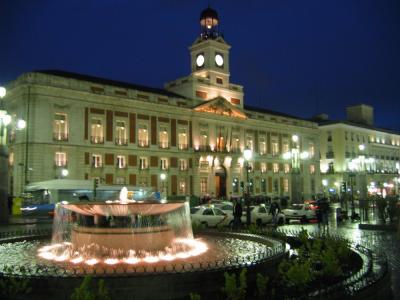
Madrid is the capital of Spain, this is the centre of tourism in the country. It´s located in the centre of Spain. The village has got five million inhabitants, but in the outskirts of the village there are a lot of people, in dormitory towns.
The inhabitants of Madrid live with a very stressful life, because everybody has a very fast rhythm. The roads to the village have been full of people that were walking from one place to another.
In the centre of Madrid there are a lot of historical buildings, monuments and museums, but outside the village there are marginal suburbs and a lot of poverty.
In my opinion, Madrid is a great town to visit, because you can find everything: plays, music, restaurants, cinemas, concerts, shopping centres, bowlings, casinos, sports… but there are some things that can only find in the capital.
To conclude, Madrid is a modern and fantastic village. I encourage you to visit it. Besides Madrid has got good connections of roads, planes, trains, underground…
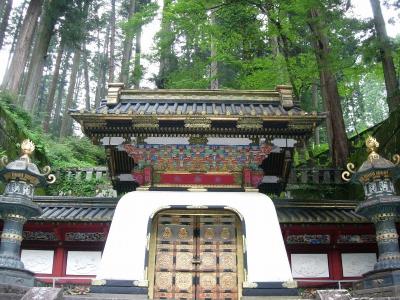
Tokyo is the capital of Japan and one of the biggest cities in the world, it has a population of 12,36 million of people but it grews on laborable days because of the people that come from other cities to study or work. It is located in the biggest island of Japan.
Tokyo is divided into two different areas, one is composed of a lot of islands; and the other one is the city, formed by 23 special neighbourhoods, and the region around it. The mainland part is where most of the population is, and it is also the politic and economic capital of the whole country.
This city has a warm climate, with temperatures around 14 degrees during the whole year. In summer the temperatures are about 24 degrees, and in winter, they are around 4 degrees with occasional snowfalls.
About monuments and sightseeing, there is a lot to see. First you should visit the imperial palace, home of the emperor and his family. That's why there are a lot of places closed, but you will anyway enjoy this visit. The palace is surrounded by the "Kyoko Gaien" (palace garden), the perfect place for a photo. There are also a lot of temples of different religions, where the several festivals are held, such as the Meiji Shrine or the Sensoji Temple. Those festivals are called "matsuri" and they commemorate a lot of important days in different religions, such as the birth of Buda.
A good place for going out is the district of Shibuya, completely dedicated to entertaiment and shops. It is famous for its shopping centres, and because the Asian trends usually start there.
I think Tokyo is a very interesting city and everybody should visit it one day, although I haven't been there yet.

I'm going to talk about a small village of Jaén called Lahiguera. It is placed in the country, approximately thirty km away to the north of the capital, Jaen; twelve km away from Andujar or Villanueva de la Reina; and six km away from Arjona. This village has an average altitude of 200 metres on the level of the sea. The climate can still be very hot in July and August and it can be colder (minimum of around 13 °C) between December and February. Economic activities mainly revolve around the olive growing, the olive oil production industry and kitchen furniture. It is a profoundly agricultural village with 100% of its territory used as farm land, with olive trees taking up to 80% and herbaceous crops the remaining 20% of the land, mainly located on the banks of the Salado de Arjona.
With regard to gastronomy, the typical dishes are fried breadcrumbs with sausage, a very rich vegetable so-called "cardillos", gazpacho and "salmorejo". The sweets made here come from old times. The most famous ones are the ring-shaped rolls of white coating, a cake of chocolate called blanket and the ring-shaped rolls of wine.
The festivities in honour of saint Juan Bautista, are the most important ones in my village. They are developed among the 24th and 26th of June. During these days many sports, cultural and playful activities are organised, and night festivals. Other festivities are in honour of saint Clara, and take place on the days just before and after the 11th of August, which is her actual festival. The people are very friendly with everybody, that is the reason why I like being there. My parents and my grandparents are from Lahiguera, that's why I very often go there. My grandparents tell me stories about this magnificent village and the truth is that I love listening to them. When I walk along its narrow streets to see the white frontages of the houses and walking around its parks reminds me very much of my childhood, since my grandparents usually walked with me after eating, to contemplate the beautiful scenery that it is possible to see from the Atalaya, name that receives the highest place of the village. To finish this essay, I would like to say something curious about Lahiguera. It maintains a peculiar tradition during Holy Week, known with the name of the "carrera de los santos", which takes place on Easter Sunday, when the Virgen de los Dolores and san Juan Bautista meet Jesús de Nazareno.The biers are carried by young people "racing round" to make the holy images come together quicker. On Easter Sunday, the pallbearers repeat the race, but now with the holy image of Cristo Resucitado, sat on his biers with his hands on his shoulders. |
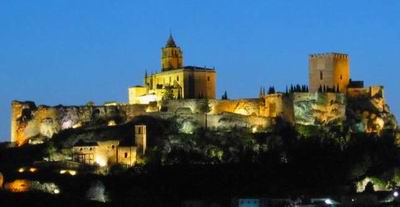
Alcalá la Real is a village located in the province of Jaén, situated between Jaén (71 km) and Granada (53km). It has a population of approximately 21,129 and a surface of 262 square kilometres. It is located in a zone that communicates the Guadalquivir Valley with Granada. It is located on the Hill of the Mota.
Its main economic activities are the cultivation of olive grove and of cherry tree, cattle (sheep and goats), craft and the industry of plastic and metals.
Famous people have walked along its streets, such as the sculptors Pablo de Rojas and Martínez Montañés, the composer Pep Ventura and the writer Arcipreste de Hita. Alcalá la Real is the head office of the award Arcipreste de Hita.
Its food is typically Mediterranean. In summer with the high temperatures they eat "gazpacho", "pipirrana" or "ajoblanco" in winter, sausages, blood sausages and bacon.
ETNOSUR (Festival of Ethnic Meetings in the Mountain Range of the South) is celebrated in June, there are concerts, forums, plays, circus, craft workshops, dance... Its importance has been increasing, reaching 40,000 visitors in 2006! In my opinion, Etnosur is a fantastic festival because many young people from Andalucia go there and there is big variety of activities.
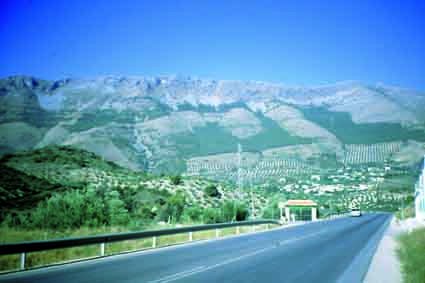
I live in Jabalcuz, a housing estate 5 kilometres away from Jaén.
It is a very pretty place, with many trees and gardens, in the mountain. I like living here very much being very calm and far from the noise and contamination of the city. Here you can stroll with your dog calmly and play with your friends in the country, organize hiking excursions or ride your mountain bike, etc.
The bad thing is that there aren’t any stores and that's why whenever you need to buy something you must go to the city, but it takes about 15 minutes by car.
In my opinion this it is the best place to live in the world.
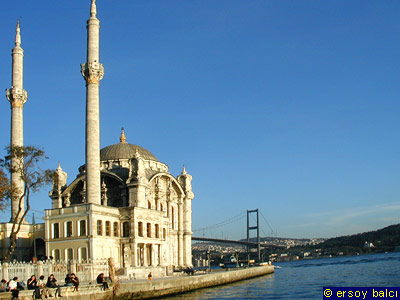
Along its history this city has received a lot of names, first Bizancio, later Constantinopla and finally Istanbul.
During centuries, Istanbul has received the Christian and Arabic cultural influences. Thanks to his spices and perfume fragances and its monumental buildings Istanbul is a paradise to sensitive people. Istanbul is Turkey's essence.
The architectural building in the Santa Sofia's museum and temple and the Blue Mosque stand out in Istanbul. The Bosphorus Strait connects the Black Sea with the sea of Marmara. Other two treasures are the defensive walls, seven kilometres long and declared by UNESCO as a World's Cultural Heritage, and the Roman Racetrack with Teodosio's Obelisk, the Streamer Column and Constantino's Column.
It's advisable to visit the Big Bazar, tight streets and low roofs where we can find a lot of souvenirs and articles such as jewels, shawls, spices, perfumes, ceramics, etc. The Turkish's baths are very famous.
The main courses of the Turkish food are kebap, made of lamb meat, iman bayildi, with vegetables, and sweets such as roses' preserve and lokums.
I have never been there, although I would love to do it. I think Istanbul is a very interesting city.
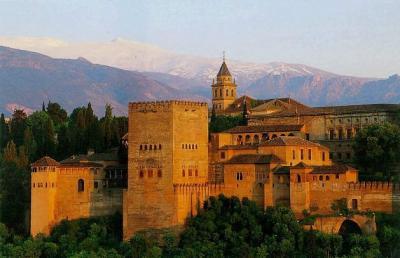
I have been in Granada many times. I have spent every Christmas, lots of week-ends, summers... even I was baptized there. My father is from Granada; my mother studied there. Nowadays, my grandma and all my cousins aunts and uncles live in this beautiful city; due to the time that I have spent there, I love this city.
Granada is a city placed in Andalusia, in the South-East of Spain, near the side of Sierra Nevada in the confluence of the rivers Genil, Darro and Beiro, with an average altitude of 700 metres on the level of the sea.
Tourism in Granada is very important, you can visit wonderful places such as: Alhambra and Generalife, Sacromonte, Albahicín, the cathedral, el Mirador de San Nicolás... Granada´s history is interesting, there are monuments of different cultures, although the most important ones are Arabic.
Granada is a cosmopolitan city and you can do whatever you want. For example: go shopping, visit fantastic places, and taste its gastronomy. Sierra Nevada is thirty minutes from Granada, there, you can ski or pracise snowboard, and just in the opposite direction you may find the tropical beach.
I love Granada because there are many possibilities to have fun. I think it is a perfect city to study, thanks to its ancient and big university. I love walking around it, especially at Christmas, when the streets are decorated. I would like to study there. The worst thing in Granada is getting stuck in a traffic jam, although public means of transport are alright.
In conclusion, Granada is a fantastic city and everybody may have a good time, enjoying all these facilities.
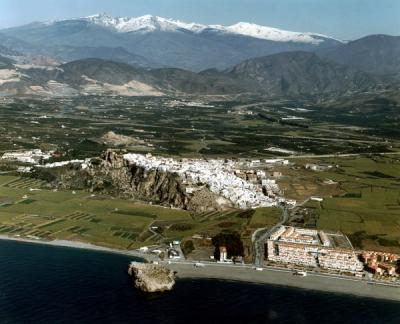
Salobreña is a town on the Costa Tropical in Granada, on the banks of the Mediterranean, between Motril and Almuñecar. The principal nucleus of population is on a rock crowned by an Arabic castle. In its municipal term the river Guadalfeo ends. With a Mediterranean climate with favourable enough temperatures both in summer and in winter. The annual average is 17º C, being 24º C in summer and 12º C in winter . The nearness of the sea makes the autumns be warmer than the springs and in general, it makes the temperatures not to be high. Thanks to this many plants of tropical origin can be cultivated. Tourism is the principal source of its economy, with several hotels and residential zones on the beach and in the mount Other economic important activity is agriculture, the cultivation of tropical fruits such as chirimoyas, avocados, or mangos stands out. A cultivation that is going to disappear is the sugar cane, which is cultivated since the Arabs were here. There are also cultivated vegetables, greenhouse fruits and season flowers. In addition to this there is a sugar factory and unmatured cane whiskies that will close when the sugar cane stops being cultivated.
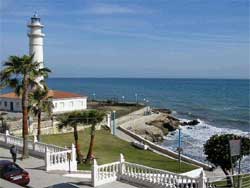
Torrox is a village of Málaga. It is located in the south of Andalucía and Spain. The number of inhabitants is 30,000 approximately. Torrox is at 145 metres of altitude. It has 7 km of fantastic beaches and this village is divided in Torrox village and Torrox beach. In Torrox beach is where there are more tourism. The atmosphere of Torrox is fantastic because “La Costa Del Sol” has the best climate of Spain and even in Europe. In summer the weather is hot and in winter isn’t very cold. I visit this village a week every year after school in summer, in June. My family and I go there to a friends’ apartament. There are a lot of hotels and tourists and I like a lot going there because there is a lot of tranquillity and the beaches are fantastic to relax.
I like going to torrox because I like a lot beaches and I like sunbathing and walking on the sand but I don’t like it a lot of days because I get bored being so much on the beach.
In Torrox beach where I go every year there are a lot of kilometres of greatest beaches and I recommend going there for holidays or a weekend.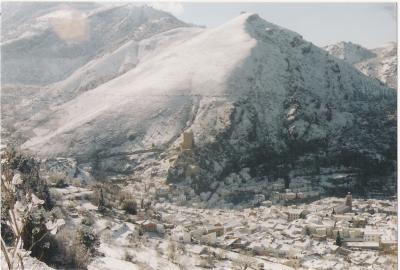
Cazorla is a town situated in the East of Andalucia, specifically in the northeast of Jaen. It has approximately 8,000 inhabitants. Cazorla is a very important town inside the province, because it has one of the best nature reserves in Spain, the mountain range of Cazorla, Segura and Las Villas. It is the vastest protected area in Spain with 209,500 hectares. Two important rivers are born here: Guadalquivir and Segura. Because of its important ecological and cultural value, and also because ot the great number of species there it was chosen as a Natural Park in 1986.
The main economic activities are tourism and agriculture. In the town you can enjoy a walk around the old area where the ruins of "Santa Maria” are. It was a church destroyed during the French Revolution, which has an important cultural value. But without a doubt the best thing in this region is the possibility of disconnect. In the town or in the mountain range you can do many different activities, from trekking to climbing a limestone wall. In Cazorla there are a lot companies that organise these activities, but the best one is Cazorla Extreme Nature.
To conclude I advise you to come here to be able to feel all these experiences, because I can’t explain what you feel when you are here. COME HERE. WE ARE WAITING FOR YOU!!!
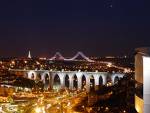
Lisboa is the capital and largest city of Portugal. It is placed in the west of Portugal, on the banks of the river Tagus, where the river expands before ending in the Atlantic Ocean forming the sea Da Palha.
In his more ancient sector, the streets are narrow and sinuous, but his new part has straight and broad avenues flanked by trees, beautiful squares and extensive public parks. In the periphery there are residential zones that have had an important development. Lisbon has an archepiscopal seat, and numerous ancient churches, convents and monasteries. Other representative buildings of the city are Belém's Tower and the castle of Saint George, of visigothic age. Between his notable cultural and educational institutions, you can find several libraries, museums, and universities, the University of Lisbon and Belém's Cultural center being the most ancient.
According to the Portuguese tradition, Ulises founded the city and gave it its original name, Olisipo. The Phoenicians occupied the zone about 1200 B.C.; later it was occupied by Rome in the 2nd; and by the Visigoths in the 5th century. The Muslims retained it from 716 A.D. up to his reconquest by the Portuguese in 1147. About the year 1260, Lisbon turned into the capital of the kingdom of Portugal. During the 15th century it happened to be one of the most dynamic European cities from an economic point of view and head of a colonial empire. In 1755 an earthquake followed by a seaquake and a fire, destroyed most of the city. After it, the city was reconstructed with neoclassic style, which has provided a beauty and typical uniformity to it. Portugal was kept neutral during the World War II, and Lisbon turned into a place of asylum and boarding harbour for the refugees of the whole Europe. In 1998 a Universal Exhibition, Expo '98, was held in Lisbon, dedicated to the oceans.
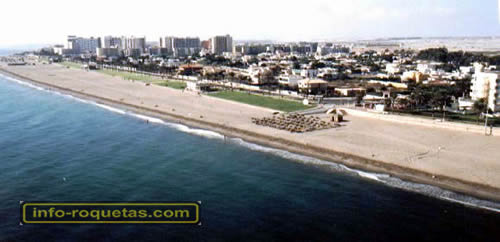
The place where I usually spend the summer holidays is Roquetas de Mar placed in Almería. It has got 71,000 inhabitants. It is a big coastal village where there are many tourists since the beaches are very good.
It is calculated that Roquetas is visited annually by more than 500,000 persons. It is a calm place, but in the nights there is a zone in the port to have fun, where all the young people meet.The celebrations and festivals in the harbour in honour of Saint Ana and the virgin of Carmen are the most important ones celebrated here.
There is so much to do in Roquetas!. What I like most is the sports centre where I practise football and more sport activities with boys of even other countries. I also like the two big shopping malls with many shops and snack bars. Nevertheless, I dislike crowded beaches because they are oppressive.
I think that there are no monuments but I am not sure. The people are friendly, very kind and open. I believe that you should visit this wonderful place.
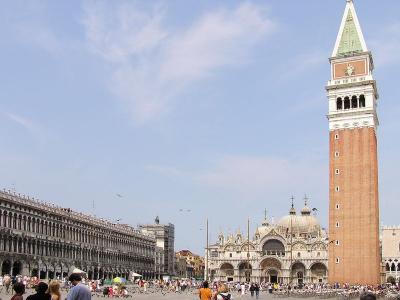
Venice, the city of the channels, is the capital of the region of Véneto. It is located on a set of islands that extends in a marshy lagoon in the Adriatic sea, between the mouths of the rivers Po and Piave in the northeast of Italian. Venice is composed by 120 small united islands to each other by 800 bridges.
The most popular celebration of Venice is the Carnival whose tradition goes back, possibly, to the 11th century when Venice began to dominate important portions of the Mediterranean Sea. It is in the 18th century when the Carnival of Venice reaches its maximum point. Aristocrats of all Europe went to the Carnival in search of diversion and pleasure.
Famous people like Marco Polo, Antonio Vivaldi, Giacomo Casanova, Paolo Eleuteri Serpieri, Pietro Gabrini, Giorgione, Antonio Canal, el Canaletto Tiziano Vecellio, Francesco Guardi and Emilio Vedova lived there.
Some famous places are San Marcos place and basilica, bridge of sighs, bridge of the academy, basilica of Saint George, gallery of the academy, the great channel...
In my opinion I think that is a beautiful place with a lot of great places to visit. I recommend visiting Venice.
http://en.wikipedia.org/wiki/Venice
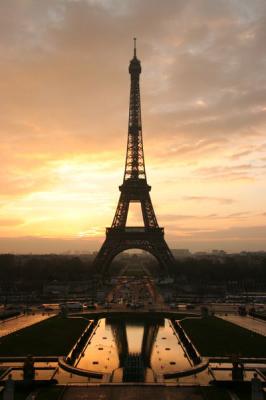
Paris is the capital of France. It's located in the north of the country. The Seine river crosses it. The population of the city itself is 2,200,000 inhabitants, and constitutes the center of a metropolitan area of 12,000,000 inhabitants, one of the largest in Europe.
Paris has a privileged place in the artistic and cultural scope. Important figures of the art have been born there, like René Descartes, Voltaire, Victor Hugo, Émile Zola, Alexandre Dumas (son), Edgar Degas, Claude Monet, Jean-Paul Sartre, Jean Renoir.
Also it has welcomed in numerous foreign artists as Leonardo Da Vinci, Vincent van Gogh, Pablo Picasso and writers like Ernest Hemingway, Gabriel García Márquez, Julio Cortázar, Francis Scott Fitzgerald and other celebrities like Alexander von Humboldt.
In addition the city counts with the greatest art work agglomeration, distributed in multiple museums and private collections. Within these treasures most outstanding it is the famous Monna Lisa, a painting of incalculable value. On the other hand the architectonic patrimony of Paris doesn't have comparison in the world, no other city has raised so many and so valuable buildings of the most outstanding universal architects.
I think that you should visit this wonderful city.

Scotland is a nation in northwest Europe and one of the four countries of the United Kingdom. Edinburgh is the capital and second largest city . It has got a population of 629,501 inhabitants. Scotland's largest city is Glasgow. Scotland comprises the northern third of the island of Great Britain. The total land mass is 78,772 km². Scotland's land border is with England, and there are 96 kilometres between the River Tweed on the east coast and the Solway Firth in the west. The Atlantic Ocean borders the west coast and the North Sea is to the east. The Ireland island lies only 30 kilometres from the south western. The climate of Scotland is temperate and oceanic. The population of Scotland in 2001 was 5,062,011 inhabitants. In July 2005 this has risen to 5,094,800 inhabitants. Scotland has three primary languages Scots, Scottish Gaelic, and Scottish English. Almost all Scots speak Scottish Standard English. The Scottish music represent their culture. I think sport is importan in this culture. It is a country with a lot of competitions. There are a lot of symbols in Scotland. One of them is William Wallace, a national hero. Another symbol is the kilt, which some men wear. It is said that there is a creature in Scotland, a lake monster, called "Nessie". It lives in Loch Ness, a lake located in the North of Scotland.

Tenerife is a Spanish island located in the Canary Islands. The capital city is Santa Cruz de Tenerife in the north of the island. These islands are in the Atlantic Ocean off the coast of Africa. Tenerife's population is 850,000 approximately, making it the most populated in the archipelago. The island is of volcanic origin and it has the highest mountain of Spain, El Teide.
It´s divided in two parts, a very dry area in the south and a very humid and green part in the north. The climate is usually hot and sunny.Tenerife has got a lot of great beaches such as Las Teresitas, Las Americas, Los Cristianos, Los Gigantes and El Médano.Las Teresitas is the most popular beach in Tenerife, it´s located north of Santa Cruz and it was extended in 1973 bringing sand from the Sahara desert, it has got some tree palms and the sea is very clear and clean.
Tourism is very important in the Canary Islands, being one of the major tourist destinations in the World. Santa Cruz de Tenerife is the second most populated city of the Canary Islands, it is a city with large and green landscaped areas and entertainment places. On the other hand, Puerto de la Cruz is the main tourist place of the northern part of the island and it is a beautiful city with excellent hotels and places. I went to Tenerife this summer for a week and I liked it so much. In conclusion, Tenerife is a beautiful place to visit and have a good time in your holiday.I went to London, capital of England, one month ago and it was very nice. I saw the British Museum. There were a lot of Egyptians and Greek items. It’s a very big Museum.
I also went to the National Gallery and I saw a lot of paintings, some by Van Goth! I went to Piccadilly Circus and to Trafalgar Square; I liked Trafalgar Square very much, it is a very big square, with a lot of people, four metal lions, and two big fountains, and you can see the Big Ben! One day I went to see the Houses of Parliament, they are not as big as I thought.
Any case they are beautiful and really nice. I saw the London Eye, but I didn’t go up because it was too high for me but I liked it as well.
I saw Buckingham Palace too, that’s big! When I went the Queen was there, there was a lot of security of course. I went trough Green Park; it’s a beautiful park.
Well I saw a lot of things like the Science Museum, I went to see other places of England, like Uxbridge. I enjoyed everything I saw, the only thing I didn’t like was the weather, which was very windy and cold.